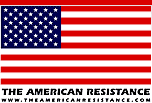The Emerging North American Union – a Timeline
Articles
By Steven Yates, John Birch Society, January 19, 2007
Debra K. Niwa has pulled together a valuable package. Her package consists of five parts: a reproduction of H.C.R. 487, an extensive timeline, a reproduction of the Declaration of the Presidents of America, a reading list in addition to her endnotes for the timeline, and a membership list of the 110th Congress, now in session.
The first (and perhaps the last) is familiar. Other items here might not be, making Niwa's piece a definitive contribution to the growing literature on the emerging North American Union.
The timeline, comprising the core of Niwa's work, documents the steps going back to the founding of the globalist Council on Foreign Relations (1921) that have been slowly eroding the borders between the U.S., Canada, and Mexico. Niwa presents compelling evidence not just that we are seeing the early stages of a North American superstate — called by its proponents a North American Community and its detractors the North American Union — but that this process has been going on all-but-unnoticed for most of the past century.
Niwa shows how numerous agreements, the first one in 1934, began the integration process in North America, even as a very similar process was being talked about in Europe and would come to fruition as the European Union. The Declaration of the Presidents of America, issued in 1967, began the move toward a Latin American Common Market, intended to come to fruition in the 1980s. "Free trade" became the watchword as we saw the founding of the Trilateral Commission in the early 1970s and the beginning of a period of bilateral trade agreements between all three nations leading up to the North American Free Trade Agreement (NAFTA) which went into effect on January 1, 1994.
Since NAFTA the process has accelerated — eventuating in the Security and Prosperity Partnership of North America (SPP) created in March 2005. Strictly speaking, even these are just components of the larger process of bringing about "global governance" through, e.g., the transnational World Trade Organization, developed out of the vastly upgraded General Agreement on Tariffs and Trade (GATT) in 1994-95. Trade accords worldwide are leading to the development of regional entities all around the globe, the European Union being the most developed.
Today, in North America, we see task forces and working groups that bypass elected officials in order to "harmonize" laws and regulations across national borders, the selling of infrastructure to transnational corporations or other extremely wealthy private investors, and finally preparation for the use of (Kelo-revised) eminent domain to seize private property as part of the removal process of barriers to "free trade." These plans include the Trans-Texas Corridor, the first leg of what has been called the envisioned NAFTA Superhighway System that would connect Canada and Mexico through the U.S., with a major trade port in Kansas City, thus creating a transnational "free trade" corridor.
We are also seeing increasing grassroots opposition from people and organizations who recognize that the primary (and in some cases the only) beneficiaries of economic and political integration will be the elites who developed and are directing the process, and the transnational corporations that have grown up around them. Motivating this opposition is the realization that regional integration and the flow of power into international organizations (corporations and transnational bureaucracies) are eroding Constitutional controls on government. This includes such mainstays of a free society as individual private property rights.
Many people now recognize that our elites have trapped us in a "race to the bottom" as America's middle class pinwheels over the economic cliff to third-world status, while at the same time "public education" continues its focus on vocational training for the low-wage global workforce desired by the elites. A two-tiered society — a world oligarchy of elites ruling over poorly educated and economically strapped masses — is the long-term goal.
Recently the opposition has focused on efforts to expose this process before a public almost certain to reject it, as France and the Netherlands have attempted to reject the EU Constitution. Is it possible to alert a sufficiently large critical mass of Americans to this process?
This study by Debra Niwa, clearly written, and with statements granting full permission to reproduce and disseminate, is the sort of thing we need. Opponents of North American regional integration must marshal support for H.C.R. 487, introduced on September 28, 2006 by Virgil Goode (R-Va.) and cosponsored by Ron Paul (R-Tx), Tom Tancredo (R-Co.) and Walter Jones (R-N.C.).
We should urge our elected representatives to support this measure through additional cosponsorship, reminding them that they were elected to serve the American people, not the global elite. We must instruct them in particular to halt the erosion of Constitutionally-limited government through regional integration written in the language of "free trade," which has become a Trojan horse for world government.
Read the complete article.
In order to use copyrighted material from this site for purposes of your own that go beyond 'fair use', you must obtain permission from the copyright owner.

